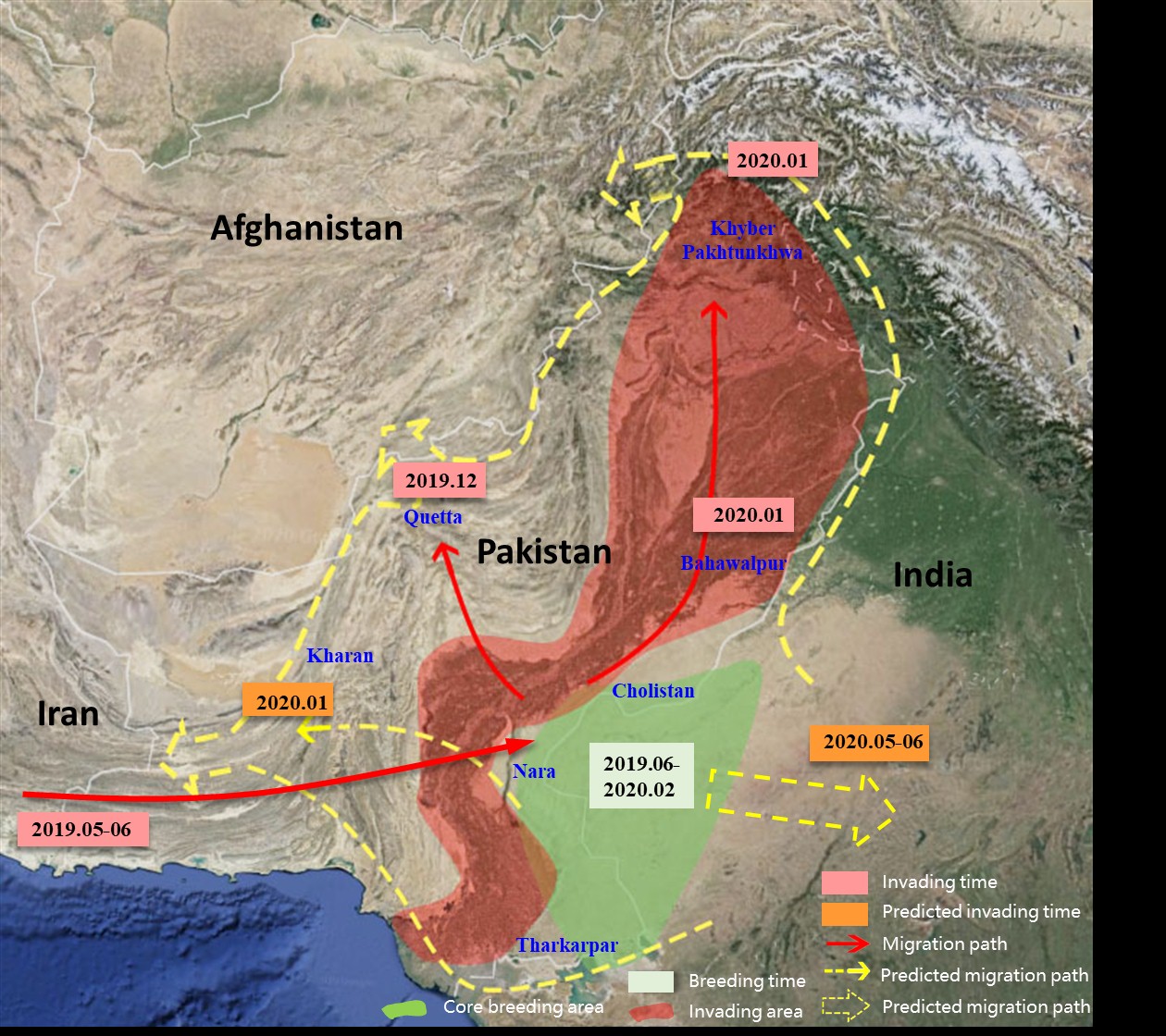
The desert locust has ravaged the Horn of Africa and Southwest Asia, posing serious threats on agricultural production and food security of the inflicted regions.
A research team led by Prof. HUANG Wenjiang and Dr. DONG Yingying from the Aerospace Information Research Institute (AIR) of the Chinese Academy of Sciences has tracked the migration path of the desert locust and analyzed possibility of the desert locust invasion to China.
The researchers used multi-source Earth Observation data, meteorological data, field data, as well as self-developed models and algorithms for desert locust monitoring and forecasting based on the Digital Earth Science Platform developed by AIR.
Based on the migration path of the desert locust from Year 2018 to 2020, they found that there is a lower probability of the desert locust in the Indo-Pakistan border invading China at present due to the influence of Northeast Monsoon and the barrier of Qinghai-Tibetan Plateau.
However, if the locust in Pakistan and India cannot be controlled effectively and when the Southwest Monsoon is extremely strong, it may has a higher probability for the locust moving from India to Myanmar via Bangladesh, and higher risk to invade China's Yunnan and Tibet from May to June 2020.

Fig. 1. Migration path of desert locust (year 2018-2020). (Image by AIR)
"Before May 2020, affected by the Northeast Monsoon, there are three potential migration paths of locusts along the Indo-Pakistan border - Indo-Pakistan border-Bahawalpur-Khyber Pakhtunkhwa, Indo-Pakistan border-Quetta and southern Region, Indo-Pakistan border-southwestern Baluchistan," said Prof. HUANG.

Fig. 2. Migration path of desert locust in Pakistan from year 2019–2020. (Image by AIR)
Scientists warn that, if the locusts in Pakistan are not effectively controlled in the adult stage in May 2020, the locust plague will continue to outbreak, which may cause a severe blow to Pakistan’s agricultural production.
Considering China's biodiversity, climate and other conditions are conducive to further breeding and migration of locusts, coupled with the local migratory locust, one of the main pests in China, it will bring serious threats to China's food security.
Scientists suggested the government to carry out large-scale locust disaster monitoring and early warning, while boosting global cooperation on desert locust prevention to help ensure global food security.

86-10-68597521 (day)
86-10-68597289 (night)

52 Sanlihe Rd., Xicheng District,
Beijing, China (100864)

